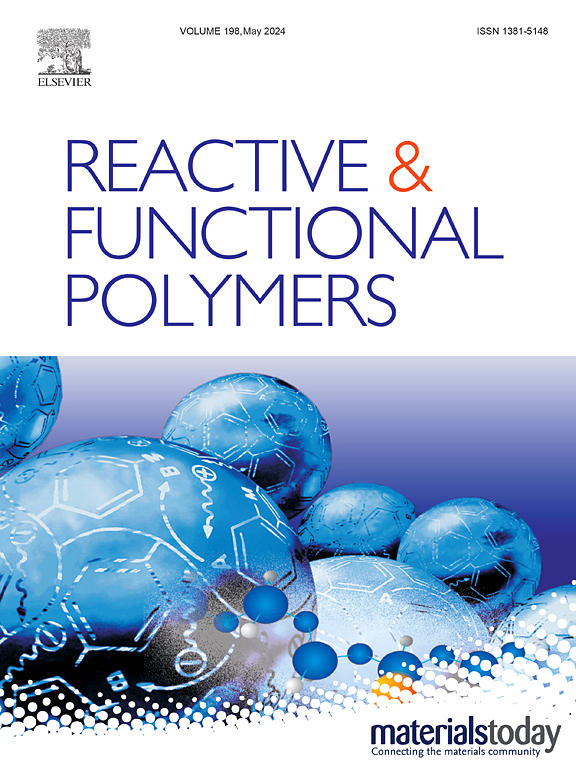溶液聚合丁苯橡胶与三苯基硅烷的硅氢化反应
IF 4.5
3区 工程技术
Q1 CHEMISTRY, APPLIED
引用次数: 0
摘要
功能化溶液聚合丁苯橡胶(SSBR)因其官能团能增强与填料的相互作用,促进分散性而在绿色轮胎中得到广泛应用。本文以三苯基硅烷(TPS)为原料,以氯铂酸为催化剂,对SSBR进行硅氢化反应,合成了功能化SSBR。研究了不同反应条件对SSBR硅氢化反应的影响,并分析了反应的动力学机理。诱导期是催化剂与1,2-丁二烯单元形成配体化合物以产生真正催化活性中心的必要条件。TPS浓度为零级反应,催化剂浓度为一级反应。温度越高,硅氢化反应速率越高。测定该反应的活化能为16.63 kJ/mol。这些发现为硅氢化反应的机理和铂基体系在橡胶功能化中的催化行为提供了新的见解。本文章由计算机程序翻译,如有差异,请以英文原文为准。

Hydrosilylation of solution-polymerized styrene-butadiene rubber with triphenylsilane
Functionalized solution-polymerized styrene-butadiene rubber (SSBR) is widely applied in green tire because functional groups enhance interaction with filler to promote the dispersion. In this paper, functionalized SSBR is synthesized by the hydrosilylation of SSBR using triphenylsilane (TPS) and catalyst chloroplatinic acid. The influence of different reaction conditions on hydrosilylation of SSBR is investigated and kinetic mechanism is analyzed. Induction period is necessary for catalyst to form ligand compound with 1,2-butadiene units to generate the real catalytic active center. The reaction is zero order for TPS concentration and first order for catalyst concentration. The higher the temperature, the higher reaction rate of hydrosilylation. The activation energy of the reaction is determined to be 16.63 kJ/mol. These findings provide novel insights into the mechanism of hydrosilylation and the catalytic behavior of platinum-based systems in the functionalization of rubber.
求助全文
通过发布文献求助,成功后即可免费获取论文全文。
去求助
来源期刊

Reactive & Functional Polymers
工程技术-高分子科学
CiteScore
8.90
自引率
5.90%
发文量
259
审稿时长
27 days
期刊介绍:
Reactive & Functional Polymers provides a forum to disseminate original ideas, concepts and developments in the science and technology of polymers with functional groups, which impart specific chemical reactivity or physical, chemical, structural, biological, and pharmacological functionality. The scope covers organic polymers, acting for instance as reagents, catalysts, templates, ion-exchangers, selective sorbents, chelating or antimicrobial agents, drug carriers, sensors, membranes, and hydrogels. This also includes reactive cross-linkable prepolymers and high-performance thermosetting polymers, natural or degradable polymers, conducting polymers, and porous polymers.
Original research articles must contain thorough molecular and material characterization data on synthesis of the above polymers in combination with their applications. Applications include but are not limited to catalysis, water or effluent treatment, separations and recovery, electronics and information storage, energy conversion, encapsulation, or adhesion.
 求助内容:
求助内容: 应助结果提醒方式:
应助结果提醒方式:


